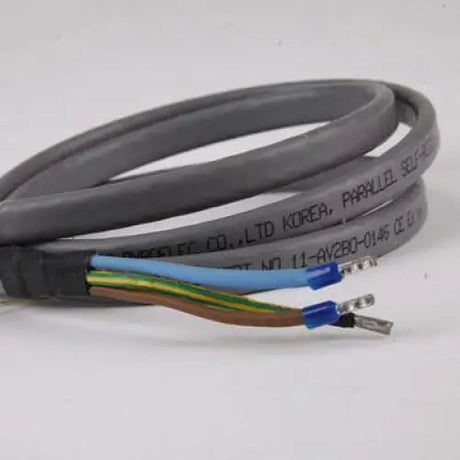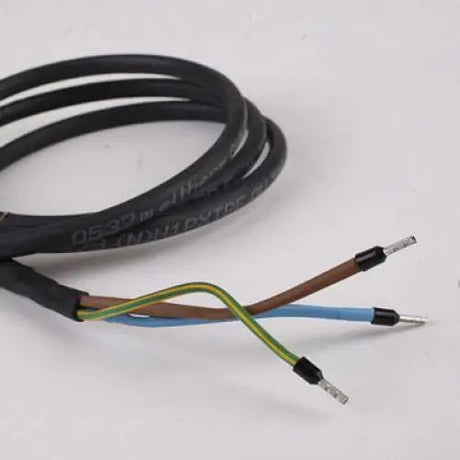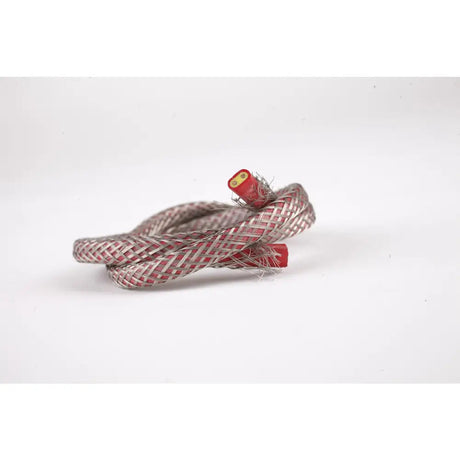Insulation & More
Self-Regulating Trace Heating Cable (10w/m Micro Cable)
From £911Unit price /UnavailableInsulation & More
Constant Wattage Parallel - Trace Heating Cable
From £465Unit price /Unavailable
All About Trace Heating Cables
Trace heating cables, also known as heat trace cables, are a specialized type of cable used to prevent freezing and maintain temperatures in pipes, tanks, valves, roofs, and gutters. This guide will provide a deep dive into trace heating cables - how they work, their key features, proper installation, and usage recommendations.
How Do Trace Heating Cables Work?
Trace heating cables work by conducting electricity to produce heat. They are designed to be wrapped around pipes, tanks, or other equipment that needs temperature maintenance. There are two main types of trace heating cables:
Self-Regulating Cables: These cables adjust their power output based on the temperature. As the temperature decreases, the cables heat up more. They automatically regulate themselves to maintain a consistent temperature.
Constant Wattage Cables: These cables provide a continuous power output that does not change based on temperature. They require a thermostat to control the temperature.
In both cases, when electric current passes through the heating element within the cable, resistive heating takes place which warms the cable and the surface it is attached to.
Key Features and Considerations
When selecting trace heating cables, here are some key features and factors to consider:
Output wattage - Choose a cable with appropriate power output for your application. This depends on factors like pipe length and ambient temperatures.
Temperature ratings - Ensure the cable is designed to withstand the temperatures of your environment.
Chemical resistance - Select a cable jacket material like fluoropolymer for chemical resistance if needed.
Cable length - Cables are sold in set lengths or can be cut to size onsite. Estimate the required length based on application.
Agency approvals - Look for cables certified by agencies like UL or CSA for safety and compliance.
Voltage rating - Match the cable voltage to your power supply (commonly 120V, 208V, 240V).
Proper Installation
To ensure effective operation and safety, trace heating cables must be installed properly:
Cables should be spiraled along the pipe to allow even heating. Do not crisscross over itself.
Maintain a minimum bend radius for the cable to avoid damage.
Use cable ties to fasten the cable every 12-18 inches.
Seal and weatherproof all connections and end terminations.
Use thermal insulation over the cable to maximize efficiency.
Follow all local electrical codes and certification requirements.
Usage Recommendations
Here are some key tips for using trace heating cables effectively:
Perform regular inspections and testing to ensure proper operation.
Use a thermostat or control panel to regulate temperatures.
Check piping layout to determine best cable placement. Run along coldest sections first.
Size the cable output to the heat loss of the piping for good efficiency.
Keep cable away from high abrasion or movement areas.
Do not overlap or cross over cable onto itself.
Ensure cables have proper electrical protection via GFCI's, fuses, etc.
Key Takeaways for Heat Trace Cables
With the right selection, installation, and usage, trace heating cables are an effective solution for freeze protection and temperature maintenance. Choose the cable type and power output carefully based on your specific application. Follow electrical codes and certification requirements. And perform regular inspections and testing to get the best performance. Reach out for assistance selecting the right trace heating cables for your needs.
Frequently Asked Questions
What are the key differences between self-regulating and constant wattage heat trace cables?
- Self-regulating cables automatically adjust their power output based on temperature.
- Constant wattage cables provide continuous output that requires a thermostat to regulate temperature.
How do I determine the required power output and length for my application?
Consider pipe length, ambient temperatures, and heat loss to determine the required cable output wattage and length. Size the cable to maintain the desired temperature.
What temperature ratings should I look for in a heat trace cable?
Choose a cable rated for the maximum and minimum temperatures expected in your environment. Common ratings are 50°C to 260°C.
Can heat trace cables be used on plastic pipes?
Yes, heat trace cables can be used on plastic pipes. Ensure the cable jacket is chemically compatible with the piping.
Is special protection needed for cables exposed to chemicals or corrosives?
Use cables with fluoropolymer jackets when exposure to chemicals/corrosives is expected for maximum chemical resistance.
How important is it to use thermal insulation over the cable?
Proper insulation improves efficiency significantly by reducing heat loss to the surroundings. Use appropriate thickness insulation like fiberglass wraps.
What gauge power supply wiring should be used for heat trace cables?
Follow local electrical codes, but typically 12-16 AWG supply wiring is sufficient for most heat trace cable circuits less than 15A.
Can heat trace cables be crossed over or overlapped onto themselves?
No, cables should never overlap or cross onto themselves. This could lead to overheating and damage.
How often should I perform maintenance inspections on the cables?
Inspect cables at least annually. Check insulation, connections, cable integrity. Confirm proper operation.
Are GFCI (ground fault circuit interrupter) required for heat trace cables?
Yes, use of GFCI protection is highly recommended and may be required by local electrical codes for safety.




